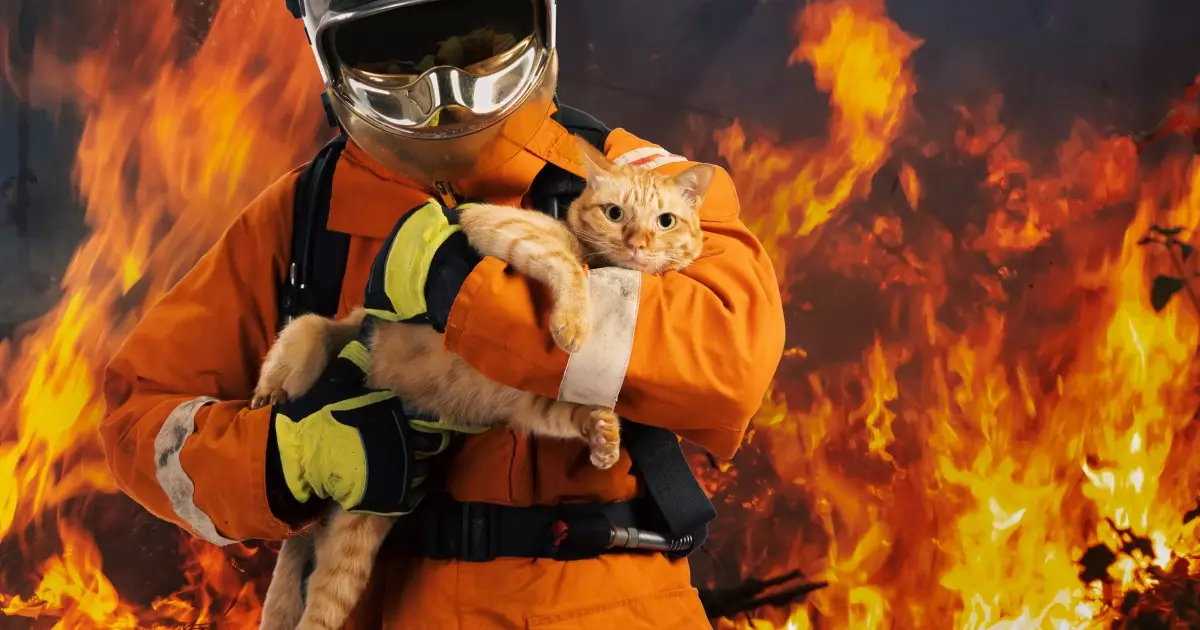With the arrival of summer, communities around the world brace for the heat and dryness that often come hand in hand with this season. Unfortunately, these climatic conditions can trigger a surge in wildfires, an issue that has become increasingly severe due to climate change. Canada, for instance, is facing what may be its most devastating wildfire season to date, igniting concern not solely for human health but also for the well-being of animals. Cats, often seen as resilient companions, are particularly vulnerable to the hazardous effects of wildfire smoke, a fact that cat owners must take seriously.
As wildfires continue to rage in various parts of the world, understanding their impact on our four-legged companions is crucial. Wildfire smoke carries an array of harmful pollutants and particulate matter that can negatively affect the respiratory health of cats. These fine particles, often invisible to the naked eye, can infiltrate the lungs and lead to serious health issues over time. Recognizing this, we must delve into the ways smoke affects our feline friends, identify the signs of distress, and implement strategies to safeguard their health.
The composition of wildfire smoke is profoundly harmful. It is made up of a mixture of gases and tiny particles that, when breathed in, can cause significant irritation to a cat’s respiratory system. Just like humans, cats require clean air to breathe; toxicity in the air can lead to a range of veterinary issues. Olivia Sanderfoot, a postdoctoral researcher at the University of California, emphasizes this notion, stating, “If the air that they’re breathing is full of toxic particles, that is going to have an impact on their health.”
These impacts can manifest in both short-term maladies and long-term consequences. For instance, cats may exhibit respiratory distress, which could escalate into chronic conditions if exposure to smoky air persists. It is critical for cat owners to remain vigilant for behavioral or physical changes in their pets during wildfire season. Common indications of smoke irritation include persistent coughing, sneezing, and labored breathing. Additionally, lethargy or a decreased appetite can signal that a cat’s health is compromised.
Understanding how to spot symptoms of distress caused by wildfire smoke is essential to ensuring the well-being of your cat. Below are some key indicators that should raise red flags for pet owners:
– **Coughing or Wheezing**: Keep an ear out for any unusual sounds when your cat breathes. A persistent cough or wheezing may signify respiratory issues.
– **Sneezing and Watery Eyes**: Frequent sneezing and signs of eye irritation are telltale signs that the smoke is affecting their comfort.
– **Difficulty in Breathing**: Rapid, shallow, or labored breaths can indicate severe respiratory distress.
– **Uncharacteristic Lethargy**: A sudden drop in energy or loss of interest in food may reflect their struggle to cope with smoke exposure.
– **Excessive Grooming**: Cats may excessively groom or paw at their faces as a response to irritation.
Each of these signs necessitates prompt attention, and cat owners should not hesitate to consult a veterinarian if they notice any of these behaviors.
While it may not be feasible to eliminate wildfire smoke exposure completely, there are proactive steps owners can take to minimize risks. Here are several strategies for protecting your cat during periods of heightened wildfire activity:
1. **Indoor Environments**: Keeping your cat indoors is critical. Seal windows and doors and use towels at thresholds to block incoming smoke.
2. **Air Quality Management**: Invest in high-quality air purifiers equipped with HEPA filters to keep indoor air clean. Position these devices in spaces where your cat often spends time to maximize their effect.
3. **Avoid Cooking or Burning Materials**: During heavy smoke events, refrain from using gas-powered appliances or burning candles, as these may worsen indoor air quality.
4. **Designated ‘Safe Room’**: Establish a clean, well-ventilated space as a sanctuary for your cat. Equip it with adequate airflow and air purifiers to ensure a smoke-free zone.
5. **Limit Outdoor Time**: During periods of poor air quality, refrain from taking your cat outdoors. This significantly reduces their exposure to harmful smoke particles.
6. **Stay Informed**: Monitor local air quality updates and adjust your protective measures as necessary. Proper hydration is equally crucial, so ensure your cat has access to fresh water at all times.
By being informed and taking the necessary precautions, cat owners can greatly reduce the health risks their pets face during wildfire season.
Ultimately, safeguarding your cat’s health amid wildfire threats demands vigilance and a proactive approach. If you observe signs of smoke exposure or have concerns about your pet’s health, consulting with a veterinarian will provide essential insights and potential remedies. With increased awareness and appropriate action, pet owners can navigate wildfire seasons more effectively, ensuring the health and happiness of their beloved feline companions. Providing a safe atmosphere is key, as our pets depend on us to protect them from both immediate dangers and long-term health threats.


Leave a Reply